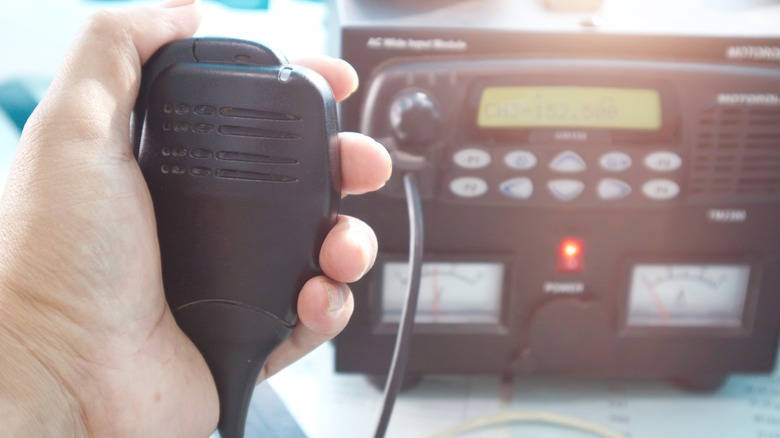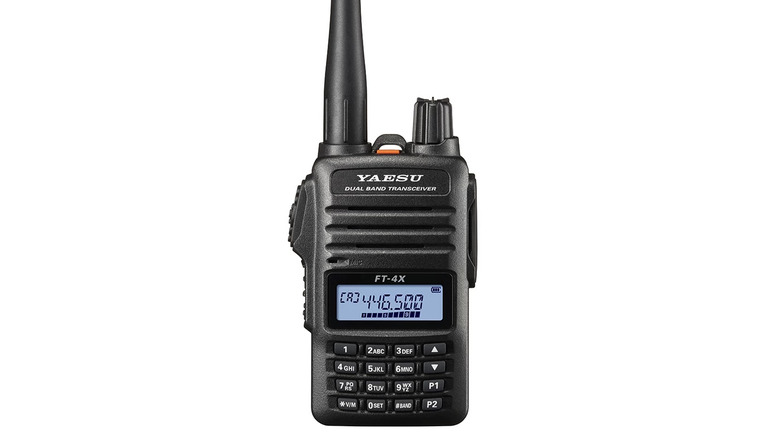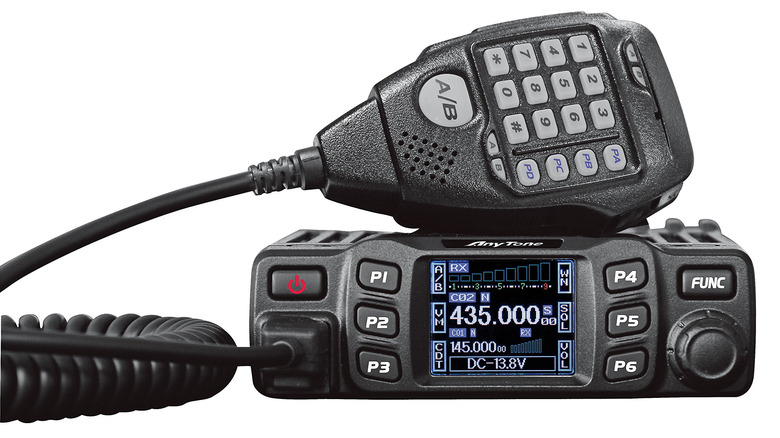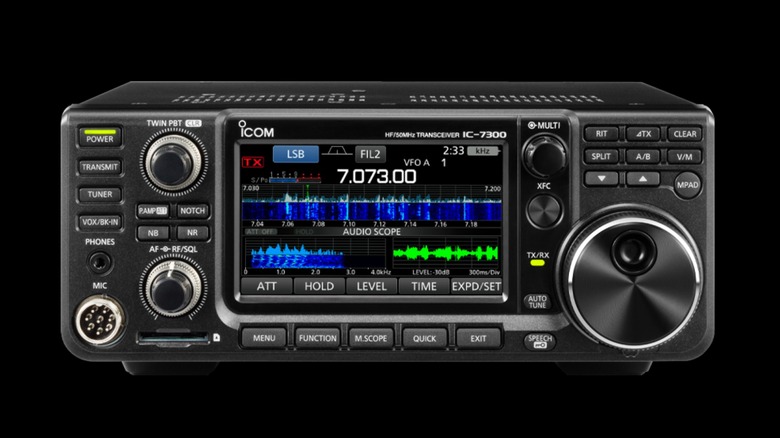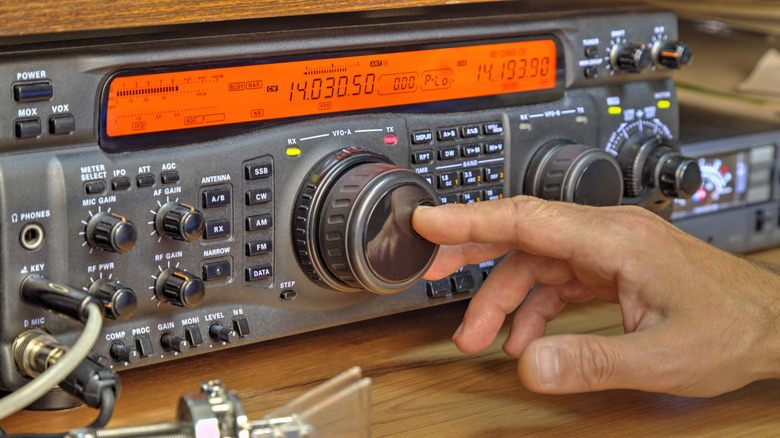3 Top Rated Ham Radio Setups For Beginners
In this day and age, there are countless methods of communication, but let's not leave radios in the past. Although smartphones offer similar functions, radios are still a trusted form of communication, so much so the U.S. government is fighting to keep AM radio in your car. And while professionals like police officers and truck drivers use them daily, radio use may not strike you as common.
Amateur radio, also known as "ham radio," is the term for the use of radio frequencies for non-commercial purposes. You can access them in the "traditional" style (a base station with a handheld microphone), through portable radio, and handheld too. And despite the tech seemingly aging out, there are many reasons why people still use ham radios. Some instances include staying informed in an emergency (which this powerful radio with every wavelength is great for), broadcasting local events like high school sports, or experimenting with the radio for fun.
It's also a worldwide community, allowing users to talk to, make friends, and learn from different kinds of people from all over the world. Of course, using ham radios still requires a license from the Federal Communications Commission, but once you've passed the exam and acquired your amateur operator license, there's a world of opportunity. But what device is right for you? We'll keep this list simple, suggesting one handheld, mobile, and base station ham radio, depending on your preference.
This list was selected based on recommendations from trusted reviewers. The methodology is explained at the bottom of this list.
Yaesu FT-4XR (Handheld)
Now, we're going to start this list off with a handheld ham radio, often referred to as a walkie-talkie or simply HT (handheld transceiver). Anyone looking to join the amateur radio scene may consider the HT first for various reasons. They're cheaper, easier to use, and come with everything you need in one package. There are plenty of great walkie-talkies for emergencies, and if you're in the market for a quality HT, look no further than the Yaesu FT-4XR.
Popular YouTuber and blogger Ham Radio for Non-Techies ranked the FT-4XR among the top handheld ham radios, making it a welcome addition on our list. This compact handheld radio provides up to 5 watts of reliable radio frequency output power with one watt of clear audio coming back through a large front speaker. The FT-4XR can transmit from 144 to 148 MHz and 400 to 480 MHz. It comes with an FM Band receiver, allowing you to receive coverage at 65-108 MHz on top of its 136-174 and 400-480 MHz receiving frequencies. It also has several scanning options, including VFO, memory, and priority channel scans.
The FT-4XR also has plenty of features, making it a great beginner ham radio. It has over 15 hours of battery life, with a high-capacity lithium-ion battery and a rapid charger. It's PC-programmable, with two keys for quick access. The HT also comes with weather alert scans, transceiver-to-transceiver cloning, and a transmitter time-out timer. It retails for $79.95, making it pretty affordable too.
AnyTone AT-778UV (Mobile)
Maybe handhelds aren't your thing, and you want a more traditional setup as you get deeper into ham radios. If that's the case, a mobile station may be the ticket. They're a bit more expensive but still portable and can be used as a base station.
The recommendation for a mobile radio is AnyTone's AT-778UV. It has a selection of 25-watt, 15-watt, and 5-watt power options. This way you can opt to increase or decrease transmitter strength. It comes with 200 programmable memory channels with dual-band functionality. You'll have access to tons of radio channels and frequencies with myriad encoding and decoding settings at your fingertips. The AT-778UV has frequency ranges of 136-174 MHz and 400-490 MHz, transmitting at 144-148MHz and 420-450MHz.
The AT-778UV also comes with single, group, selective, and emergency call functions, with options to reject calls from other radios. The smart menu is simple, and it's PC programmable. However, what makes the AT-778UV a great beginner ham radio is that it's small, compact, and easy to use though more robust than a handheld. The additional accessories, including the microphone and mobile bracket, ensure you'll get on the air fast, regardless of whether you're using it on the road or in your home. Plus, it's on the cheaper end of mobile ham radios, retailing for $124. Minnesota Ham Radio, a club for radios and licensing, also recommends the AT-778UV, highlighting the radio's features and low price as a great beginner choice. The site eHam also rates it extremely high for quality, size, and price.
ICOM IC-7300 (Base station)
What's a ham radio list without a base station? These behemoths stay fixed in one location (like a home or office), generate more power, offer multi-band communication, and boast external microphones. However, they also require a bit more advanced experience with ham radios (or a great teacher), a second-tier FCC General Class license, and can run you upwards of $1000. So it's not quite what we'd call a beginner option.
However, you'll have difficulty finding a better entry-level base station than ICOM's IC-7300. It has 100 watts of output power and a radio frequency Direct Sampling System. That means it digitizes radio frequencies before they hit the receiver. It eliminates any noisy intermediate frequencies to deliver a clearer sound that differentiates it from other entry-level base stations.
As if that wasn't enough to put the IC-7300 in a league of its own, it also boasts a large LCD touchscreen, simplifying ham radio operations and displaying information similar to top-of-the-line radios. You can adjust the settings, check audio frequencies, and see signal strength alterations through its high-resolution waterfall function. It also has a built-in antenna tuner, 101 channels, an SD memory card slot, and a multi-speed fan to help cool this radio monster. It retails for a hefty $1,099.95, which is more affordable than other base stations. But don't just listen to us. Ham Radio Prep, a program offering licensing prep courses and other resources, ranked the ICOM IC-7300 as its top ham radio for beginners, highlighting its seemingly endless list of features that will keep you learning as you progress in the industry.
Why did we choose these radios?
Understandably, getting into ham radio can be incredibly overwhelming. From the different types of devices to the licensing process, it can be difficult if you don't have someone guiding you. Not to mention, the prices can quickly add up, making the barrier to entry even higher. For this list of recommendations, we looked at radios that other reputable sources ranked highly. However, to differentiate this list, we didn't automatically include other reviewers' top choices, we sought ought brands and specific models that frequently appeared in similar rankings.
We also wanted to give a more diverse set of recommendations. Many similar lists skew toward one type of ham radio. For ours, we wanted to include one of each type, factoring in its features, price, and longevity.
